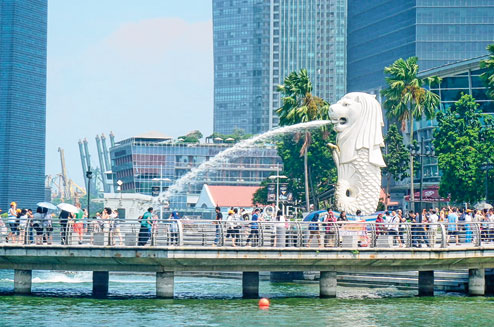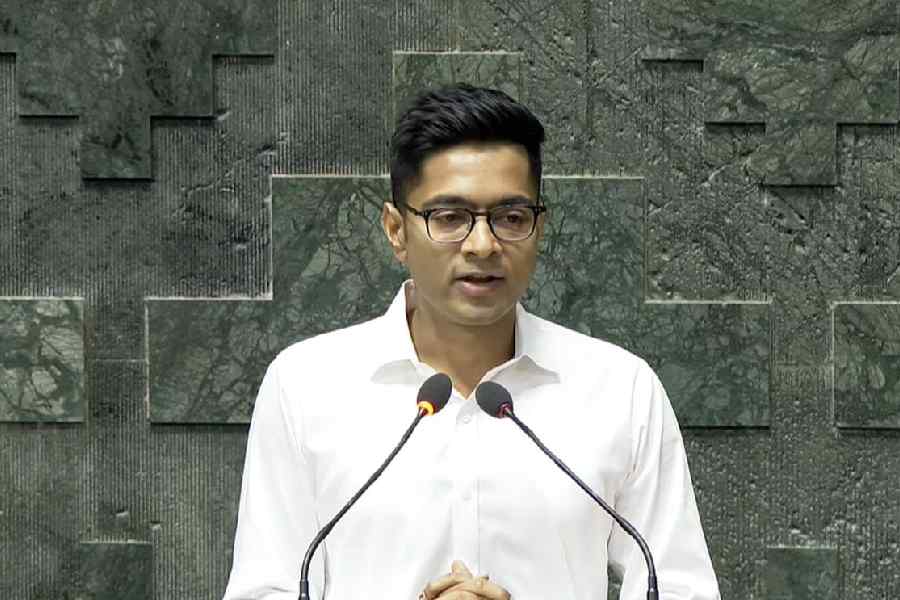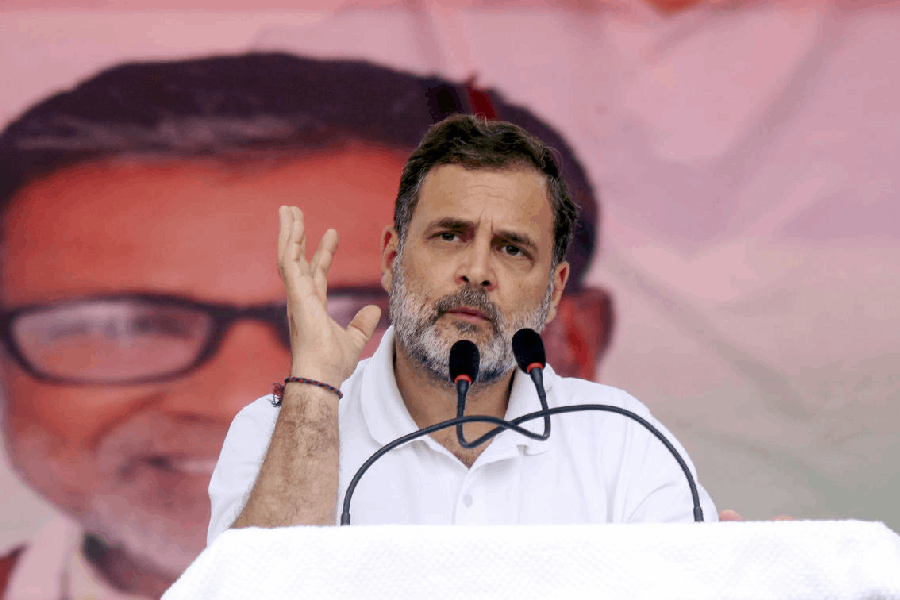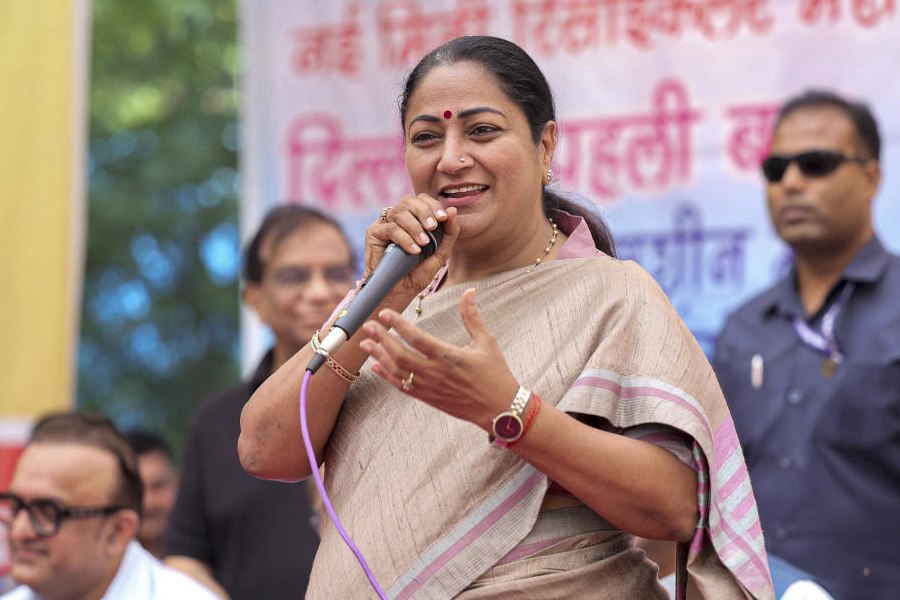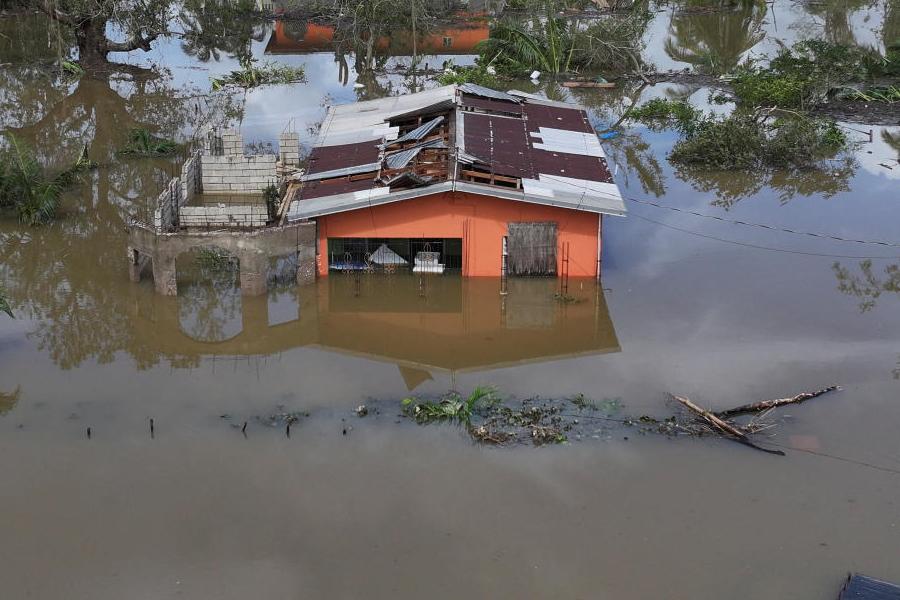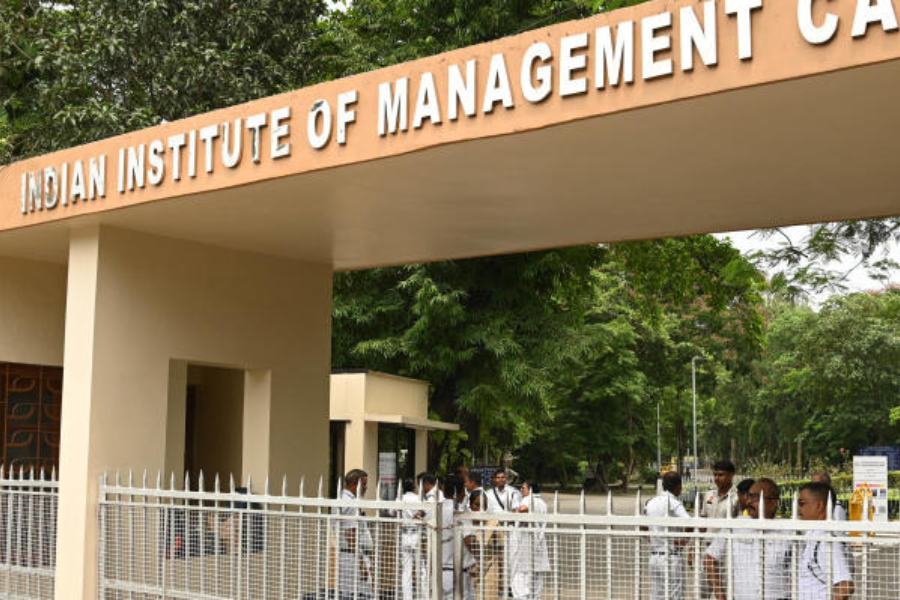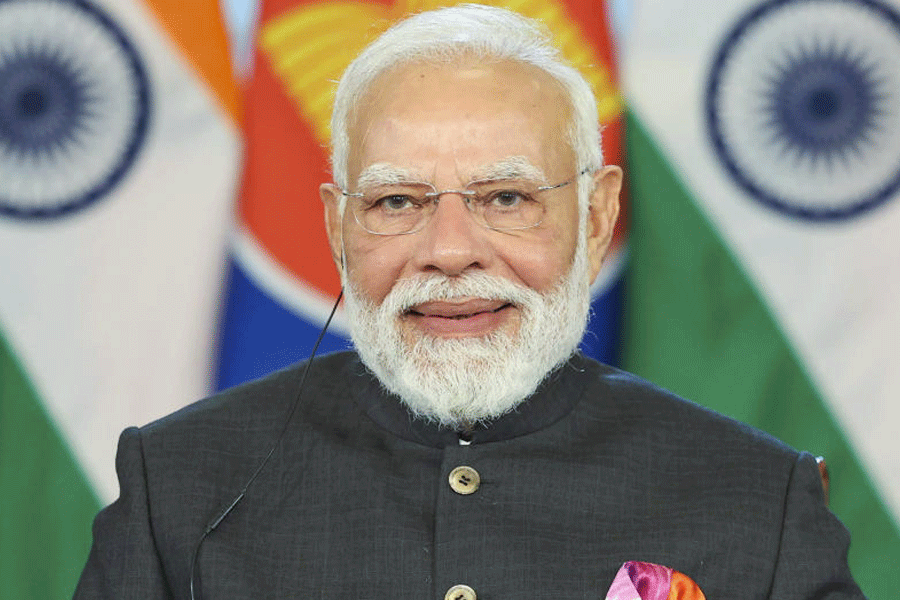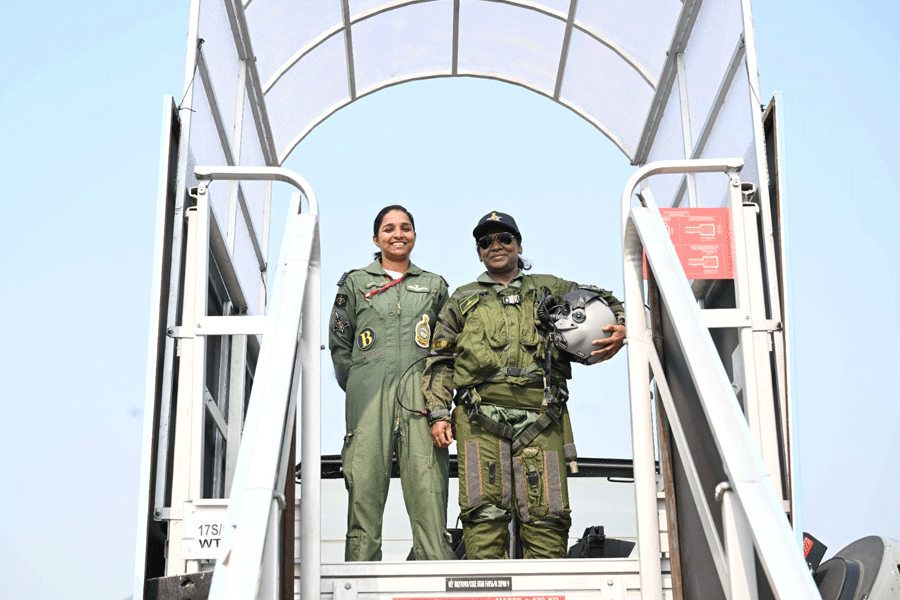 |
 |
| Merlion Park in Singapore and (above) Bengalis get a taste of home in Singapore as they chat with Bratati Bandyopadhyay after her show. Pictures by Sudeshna Banerjee |
On a Sunday, at the promenade beside Esplanade Theatres, tourists to Singapore have flocked to savour the sight of a lit-up Merlion Park by Marina Bay. Inside the Esplanade Recital Studio, about 100 resident Bengalis have gathered to listen to Bratati Bandyopadhyay recite Tagore, Nazrul, Satyen Dutta, Joy Goswami... and Debjani Mitra, a budding poet who is one of their own. This gathering is a microcosm of the little Bengal that has developed in Singapore. It may not be a geographical entity like Little India is, but it makes its presence felt through cultural, educational, and even gastronomic manifestations.
“There are about 1,000 Bengali families in Singapore, leaving the 1.5 lakh Bangladeshis aside. Of them, about 675 are our members,” says Nikhilesh Gupta, president of the Bengali Association of Singapore. The association, formed in 1956, proliferated as Bengalis started flying east to make a life.
Gupta estimates that about half of them are keen to stay in touch with their roots. In deference to this need Bengali has been recognised by the Board of Teaching and Testing South Asian Languages, under Singapore’s ministry of education, as one of the five non-Tamil Indian languages that children here can take up as a second language, the other four being Hindi, Urdu, Punjabi and Gujarati. Students can now take Bengali tests at both their Singapore-Cambridge General Certificate of Education O level and A level exams. “It is such a relief that my daughter can read Satyajit Ray and Sunil Ganguly in the original. We had settled here when she was in Class V,” says Rumu Paul, 50.
What is a projapoti?
With mainstream schools not taking Bengali classes, students have to prepare on their own. Most enrol at Bangla Language and Literary Society (BLSS), which holds weekend classes. This is one of the two Bengali schools in Singapore, the other is run by the Bangladesh Language and Cultural Foundation. “Because of dialectical reasons, families from West Bengal prefer BLSS, which has about 700 students,” says Debnath Paul, vice-president, administration, BLSS.
Classes are held for four hours on Saturdays at a central Singapore school. Both the space and funds are provided by the ministry of education.
“Students have to master grammar, comprehension, report-writing…. There is even an oral component involving reading, listening and comprehension,” says Rumu Paul, a senior teacher at the school. To help students stay in touch with the language, a book fair is organised every year, importing Bengali books from Calcutta and Dhaka.
Some parents also take extra steps. About a dozen had enrolled their wards for Bratati’s recitation workshop held the day before, organised by the young poet Debjani’s company Zoie. Children aged eight to 18 spent two hours over Saadh, a Tagore poem. “A singer,” said a little boy when Bratati asked him who Tagore was. Faced with a line from the poem, a girl asked what a “projapoti” was.
Anisha, 9, and Ishani, 14, fared better, having been signed up for Bengali in school by mother Madhumita. “My daughters speak better Bengali than my Bangalore-based sister’s sons,” she smiles. Kakali Basak got a domestic help from Calcutta to ensure that daughter Soumili got enough spoken Bengali practice.
Debjani hopes to teach her five-year-old Bengali too. “Disha may be too young; still I want her to imbibe our culture,” she said, turning to the girl sitting through two hours of poetry. The mothers later made a pact to organise Bengali practice meets at one another’s homes.
Srijit to Saraswati puja
At the Singapore India Development Authority centre, where the BAS is based, youngsters are busy rehearsing dance steps to Dhitang dhitang bole for an upcoming show. Pratyush Pal, 20, says he is debuting on stage to surprise his parents. “In my childhood, my mother used to sing this song,” says the young man who has spent 15 years in Singapore. He listens to new-age Bengali songs and watches Srijit Mukherji films. “I miss being part of the culture when we visit Calcutta or Santiniketan.”
“Every Bengali family I know sends girls to dance and boys to either tabla or recitation classes,” says Sudeshna Mukherjee, a resident for five years. She dances in shows with choreographer Srabanti Dutta. The Singapore Bengalis have a busy cultural calendar, thanks to the two key organisations —BAS and Tagore Society.
“Our annual calendar features Durga puja, Laxmi puja, Saraswati puja, Dol, sit-and-draw and cricket match, Rabindra-Nazrul Jayanti, external artiste’s show, Nava Varsha and theatre,” lists out Gupta, who has directed 36 plays since he settled in Singapore in 1993.
“For Tagore’s 150th birth anniversary celebrations, we got a chorus team from Singapore Chinese Girl’s School to sing the original Western inspirations, after which we sang the Tagore song. Our Durga puja is attended by 23,000 people of all ethnicities.”
The Tagore Society is no less busy. President Dolly Sinha Davenport, a resident since 1966, says her own three children cannot read Bengali. “But the new generation has more scope to absorb the language and the culture.”
To this, the Bengali film festival Darpan has been added since 2012. “We will be back with a new clutch of contemporary releases and guests from Tollywood this September,” says organiser Sreyashi Sen, a Jadavpur University alumnus.
Paturi with salmon
Bengali food has also reached Singapore shores. Mustard, the first Bengali restaurant, was started in Little India by Deepali Roy, with a Bengali-cum-Punjabi menu card in 2005. The restaurant is now run by Deepali’s ex-partner Radhika Abby. Deepali has opened another eatery called Fifth Season, which specialises in Tangra-style Chinese. “At the start, I had that on the signage itself.” That was invitation enough for Calcutta-borns to come homing in.
Mustard has a mixed clientele, attracting Caucasians too. Says Radhika: “People love our Kosha Mangsho, Hinger Kochuri, Chorchori, Chholar Dal and Shorshe Maachh. Our Bengali chef has toned down the taste. For instance, we avoid mustard oil as not everyone can stand the pungent flavour.”
But the strongest taste of Bengal comes from the kitchens. Paramita Maitra makes paturi with salmon. “The Milky fish from the Philippines tastes somewhat like hilsa but we wait for the real thing to arrive from Bangladesh,” she smiles.
The only void in the menu is sweets. “All we get is south Indian varieties or canned products from Haldiram’s,” says Soma Mukherjee, who requests all friends visiting from Calcutta to bring sandesh.

